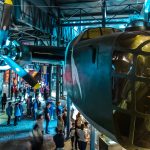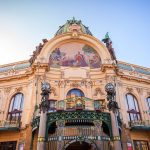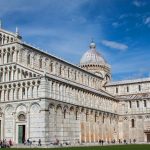
Florence tourist attractions
Florence, capital of Italy’s Tuscany region, is home to many masterpieces of Renaissance art and architecture. One of its most iconic sights is the Duomo, a cathedral with a terracotta-tiled dome engineered by Brunelleschi and a bell tower by Giotto. The Galleria dell’Accademia displays Michelangelo’s “David” sculpture. The Uffizi Gallery exhibits Botticelli’s “The Birth of Venus” and da Vinci’s “Annunciation.”
The city attracts millions of tourists each year, and UNESCO declared the Historic Centre of Florence a World Heritage Site in 1982. The city is noted for its culture, Renaissance art and architecture and monuments.The city also contains numerous museums and art galleries, such as the Uffizi Gallery and the Palazzo Pitti, and still exerts an influence in the fields of art, culture and politics. Due to Florence’s artistic and architectural heritage, Forbes ranked it as the most beautiful city in the world in 2010.
Florence plays an important role in Italian fashion, and is ranked in the top 15 fashion capitals of the world by Global Language Monitor; furthermore, it is a major national economic centre, as well as a tourist and industrial hub.
1.Cathedral of Santa Maria del Fiore and Piazza Duomo

Florence Cathedral, formally the Cattedrale di Santa Maria del Fiore, is the cathedral of Florence, Italy. It was begun in 1296 in the Gothic style to a design of Arnolfo di Cambio and was structurally completed by 1436, with the dome engineered by Filippo Brunelleschi
Piazza Duomo and the group of buildings that form its cathedral complex gather some of Italy’s greatest artistic treasures into one relatively small area. As you tour the baptistery, the bell tower, the cathedral, and its museum, you’ll see some of the best-known masterpieces of art and architecture by the greatest artists of the Italian Renaissance — Ghiberti, Brunelleschi, Donatello, Giotto, and Michelangelo.
Begin by walking around the square to admire the intricate inlaid marble exteriors, then step inside each one to look more closely at the stained-glass works of art that greet you wherever you look.
The cathedral complex, in Piazza del Duomo, includes the Baptistery and Giotto’s Campanile. These three buildings are part of the UNESCO World Heritage Site covering the historic centre of Florence and are a major tourist attraction of Tuscany. The basilica is one of Italy’s largest churches, and until the development of new structural materials in the modern era, the dome was the largest in the world. It remains the largest brick dome ever constructed.
The cathedral is the mother church of the Archdiocese of Florence, whose archbishop is Giuseppe Betori.
2.Battistero di San Giovanni (Baptistery of St. John)

The Florence Baptistery, also known as the Baptistery of Saint John, is a religious building in Florence, Italy, and has the status of a minor basilica. The octagonal baptistery stands in both the Piazza del Duomo and the Piazza San Giovanni, across from Florence Cathedral and the Campanile di Giotto.
The Baptistery is one of the oldest buildings in the city, constructed between 1059 and 1128 in the Florentine Romanesque style. Although the Florentine style did not spread across Italy as widely as the Pisan Romanesque or Lombard styles, its influence was decisive for the subsequent development of architecture, as it formed the basis from which Francesco Talenti, Leon Battista Alberti, Filippo Brunelleschi, and other master architects of their time created Renaissance architecture. In the case of the Florentine Romanesque, one can speak of “proto-renaissance”, but at the same time an extreme survival of the late antique architectural tradition in Italy, as in the cases of the Basilica of San Salvatore, Spoleto, the Temple of Clitumnus, and the church of Sant’Alessandro in Lucca.
The Baptistery is renowned for its three sets of artistically important bronze doors with relief sculptures. The south doors were created by Andrea Pisano and the north and east doors by Lorenzo Ghiberti.Michelangelo dubbed the east doors the Gates of Paradise.
The Italian poet Dante Alighieri and many other notable Renaissance figures, including members of the Medici family, were baptized in this baptistery.
The building contains the monumental tomb of Antipope John XXIII, by Donatello.
3.Piazzale Michelangelo

Piazzale Michelangelo is a square with a panoramic view of Florence, Italy, located in the Oltrarno district of the city.
So often misspelled as Piazzale Michelangelo that even city tourism material occasionally slips up, this terrace above the city is an obligatory stop for tour buses, and the spot from which all those postcard shots of the cathedral are taken. During busy tourist seasons, the best time to enjoy it in relative peace is late afternoon or early evening; it’s especially lovely at sunset.
Although you can get a 360-degree panorama of Florence from the dome of the cathedral, only from this terrace can you fully appreciate how Brunelleschi’s dome dominates the city center. Nor can any other height give you this sweeping city view that encompasses the Ponte Vecchio, Palazzo Vecchio, Santa Croce, and other landmarks.
This Florentine piazza was designed by architect Giuseppe Poggi and built in 1869 on a hill just south of the historic center, during the redevelopment of Oltrarno, the left (South) bank of the Arno river. In 1869, Florence was the capital of Italy and the whole city was involved in an urban renewal, the so-called “Risanamento” or the “Renovation” of the city’s neighborhoods. Lungarni (riverside walkways; “lungarno”, singular) were built on the riversides. On the right bank, the fourteenth-century city walls were removed and turned into the Viali di Circonvallazione, mimicking the French “boulevard” design, six lanes wide and lined with trees. On the left bank winding up the hill of San Miniato the Viale dei Colli was built, a tree-lined street over 8 kilometers long ending at the Piazzale Michelangelo which was built as a terrace with a panoramic view of the city.
4.Uffizi Palace and Gallery

The Uffizi Gallery is a prominent art museum located adjacent to the Piazza della Signoria in the Historic Centre of Florence in the region of Tuscany, Italy.
The Uffizi Gallery (UK: /juːˈfɪtsi, ʊˈfiːtsi/; Italian: Galleria degli Uffizi, pronounced [ɡalleˈriːa deʎʎ ufˈfittsi]) is a prominent art museum located adjacent to the Piazza della Signoria in the Historic Centre of Florence in the region of Tuscany, Italy. One of the most important Italian museums and the most visited, it is also one of the largest and best known in the world and holds a collection of priceless works, particularly from the period of the Italian Renaissance.
After the ruling House of Medici died out, their art collections were given to the city of Florence under the famous Patto di famiglia negotiated by Anna Maria Luisa, the last Medici heiress. The Uffizi is one of the first modern museums. The gallery had been open to visitors by request since the sixteenth century, and in 1765 it was officially opened to the public, formally becoming a museum in 1865
Few would argue the Uffizi’s place among the handful of world’s top art museums. Its collections are simply staggering in their diversity and quality, and even if art is not your main interest, you should see the highlights of the paintings here.
You’ll come away understanding a lot more of how Florence’s 14th- to 16th-century painters changed the face of western art, as you see the transition from the stilted Byzantine images to the life-like figures and landscapes of the Renaissance artists.
5.Piazza della Signoria and the Loggia dei Lanzi
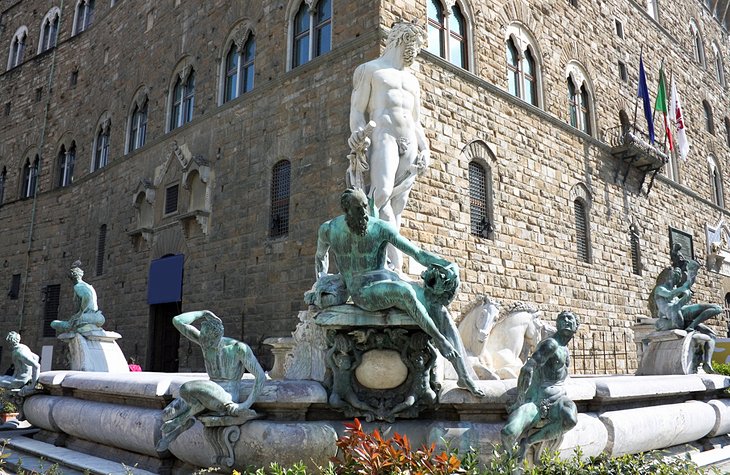
The Loggia dei Lanzi, also called the Loggia della Signoria, is a building on a corner of the Piazza della Signoria in Florence, Italy, adjoining the Uffizi Gallery. It consists of wide arches open to the street. The arches rest on clustered pilasters with Corinthian capitals. The wide arches appealed so much to the Florentines that Michelangelo proposed that they should be continued all around the Piazza della Signoria
The Loggia dei Lanzi, also called the Loggia della Signoria, is a building on a corner of the Piazza della Signoria in Florence, Italy, adjoining the Uffizi Gallery. It consists of wide arches open to the street. The arches rest on clustered pilasters with Corinthian capitals.
This broad square has been the center of power in Florence since its 14th-century origins – and perhaps even before, as Etruscan and Roman remains have been found below its pavement. Today, it is the social center as well, a favorite meeting place filled with tourists and locals. At its center is the Neptune Fountain, at one side the Palazzo Vecchio, still housing the city’s government.
Against the wall of the Uffizi, which forms one end of the piazza, is the Loggia dei Lanzi, an outdoor sculpture gallery with several notable pieces. Most widely recognized of these is Benvenuto Cellini’s best-known work, Perseus with the Head of Medusa. In front of the Palazzo Vecchio is a copy of Michelangelo’s David.
6.Galleria dell’Accademia (Academy Gallery)

The Galleria dell’Accademia di Firenze, or “Gallery of the Academy of Florence”, is an art museum in Florence, Italy. It is best known as the home of Michelangelo’s sculpture David. It also has other sculptures by Michelangelo and a large collection of paintings by Florentine artists, mostly from the period 1300–1600.
The Galleria dell’Accademia di Firenze, or “Gallery of the Academy of Florence”, is an art museum in Florence, Italy. It is best known as the home of Michelangelo’s sculpture David. It also has other sculptures by Michelangelo and a large collection of paintings by Florentine artists, mostly from the period 1300–1600 (the Trecento to the Late Renaissance). It is smaller and more specialized than the Uffizi, the main art museum in Florence. It adjoins the Accademia di Belle Arti or academy of fine arts of Florence, but despite the name has no other connection with it.
In 2016, it had 1.46 million visitors, making it the second-most-visited art museum in Italy, after the Uffizi (2.02 million).
Michelangelo’s best-known work, David, is copied all over Florence, but inside this art museum, you’ll find the original. Unfortunately, as a result of an attack on the sculpture, it is now behind glass, but it still never fails to inspire.
The David isn’t the only Michelangelo here, nor is it the only important masterpiece. In the sculptures shown in the same gallery, you can almost watch Michelangelo at work as you see the four unfinished slaves, meant for a tomb in Rome, seemingly in the process of being released from the marble.
7.Palazzo Vecchio (Palazzo della Signoria)
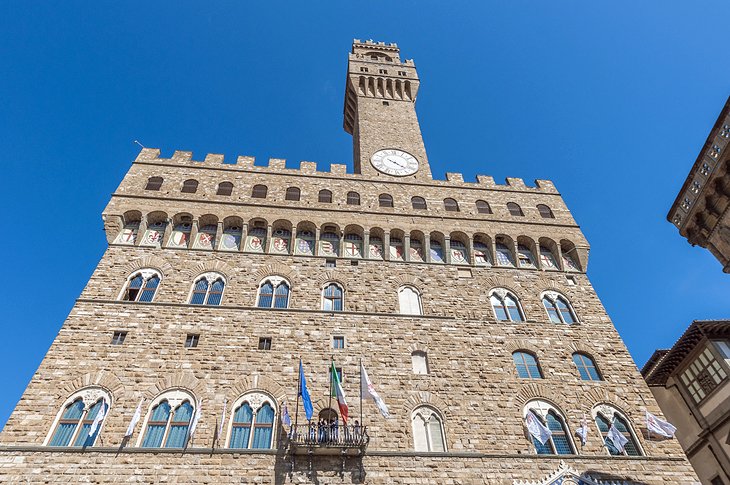
Piazza della Signoria (Italian pronunciation: [ˈpjattsa della siɲɲoˈriːa]) is a w-shaped square in front of the Palazzo Vecchio in Florence, Italy. It was named after the Palazzo della Signoria, also called Palazzo Vecchio. It is the main point of the origin and history of the Florentine Republic and still maintains its reputation as the political focus of the city. It is the meeting place of Florentines as well as the numerous tourists, located near Palazzo Vecchio and Piazza del Duomo and gateway to Uffizi Gallery.
The Palazzo Vecchio is the town hall of Florence, Italy. It overlooks the Piazza della Signoria, which holds a copy of Michelangelo’s David statue, and the gallery of statues in the adjacent Loggia dei Lanzi.
History, art, and power echo in the opulent rooms and grand galleries of this fortress-like palace in the center of Florence. From here, the city/republic was ruled, and its powerful Medici family commissioned the leading artists and architects of the day to design and decorate their offices and apartments.
Be sure to sign up early for one of the free tours, so you’ll get to see some of the secret passages the Medici used to move among the rooms; return in the evening (save your ticket) to climb to the roof for sunset views of the city.



